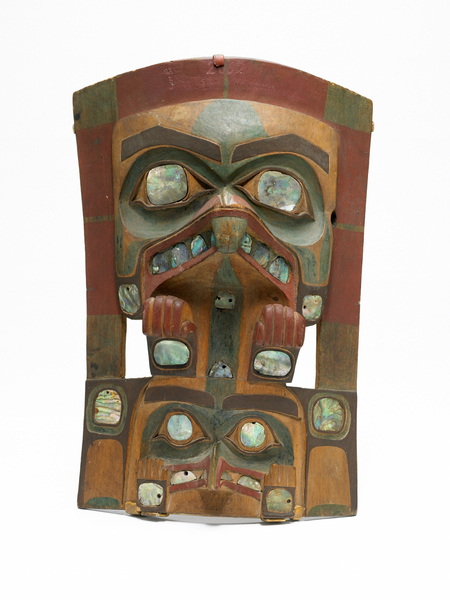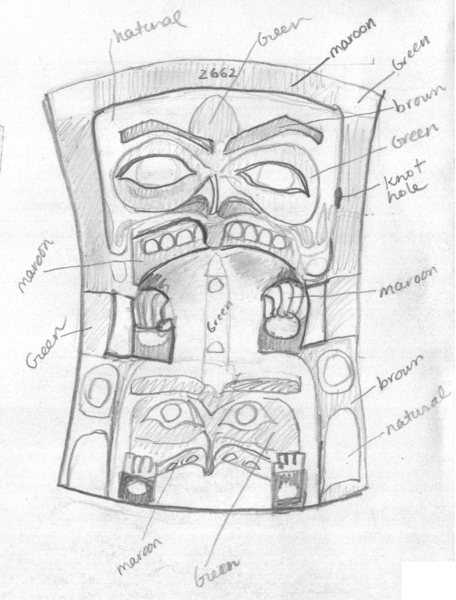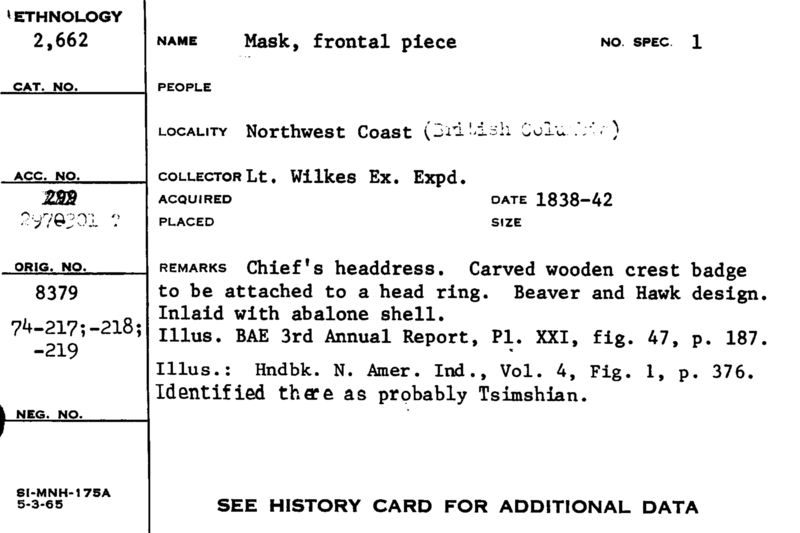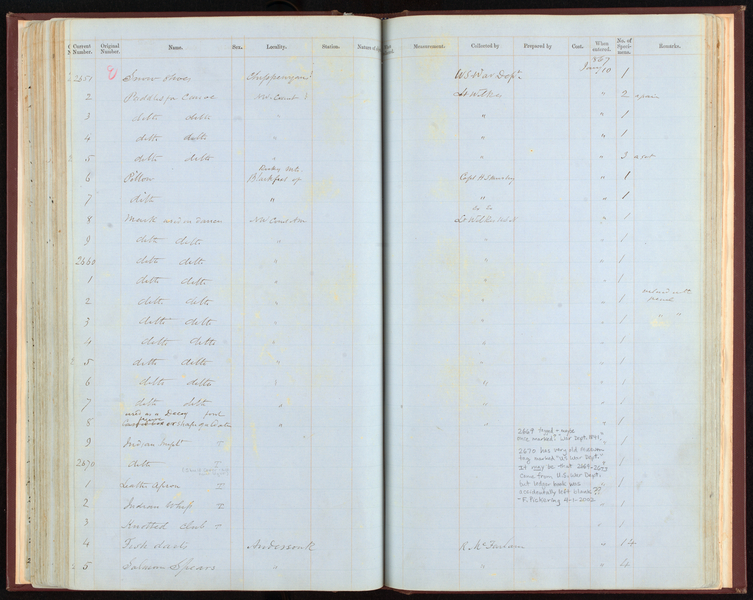Frontlet For Headdress Item Number: E2662-0 from the National Museum of Natural History





Notes
CHIEF'S FRONTLET - "CARVED WOODEN CREST BADGE," BEAVER AND HAWK DESIGN. PAINTED GREEN, MAROON, AND BROWN AND INLAID WITH ABALONE SHELL. THERE IS A PIECE OF ABALONE SHELL MISSING FROM MAIN FIGURE'S (THE HAWK'S) LEFT EYE. MARKS) "BY E.(DWARD) VERY EX EX 36 B(OX)", (READ ON MASK UNDER BLACK LIGHT). PUBLICATION: ILLUS. IN BAE ANNUAL REPORT III, PL. XXI, FIG. 47, P. 187. "MAGNIFICENT VOYAGERS," BY VIOLA & MARGOLIS, ILLUS. P. 141. EXHIBITED MAGNIFICENT VOYAGERS, NATIONAL MUSEUM OF NATURAL HISTORY, 1985-86.FROM CARD: "CHIEF'S HEADDRESS. CARVED WOODEN CREST BADGE TO BE ATTACHED TO A HEAD RING. BEAVER AND HAWK DESIGN. INLAID WITH ABALONE SHELL. ILLUS. BAE 3RD ANNUAL REPORT, PL. XXI, FIG. 47, P. 187. [Materials identified there as birch wood, abalone shell, and spruce gum to glue abalone to wood]. ILLUS.: HNDBK. N. AMER. IND., VOL. 4, FIG. 1, P. 376. IDENTIFIED THERE AS PROBABLY TSIMSHIAN."Source of the information below: Smithsonian Arctic Studies Center Alaska Native Collections: Sharing Knowledge website, by Aron Crowell, entry on this artifact http://alaska.si.edu/record.asp?id=501, retrieved 3-31-2012: Frontlet for headdress, Tsimshian of British Columbia, Canada. A chief's headdress - with its frontlet mask, crown of sea lion whiskers and flicker feathers, and long train of ermine pelts - signified his clan, rank, and spiritual powers. He wore it as the host of memorial ceremonies and during initiation ceremonies for the Dancer, Dog Eater, Cannibal, and Destroyer secret societies, named for the mythical beings portrayed by the dancers. The crest emblems on this frontlet are Beaver (above) and Eagle (below). The feathered crown of the headdress (now missing) was filled with eagle down, a symbol of peace that drifted over the crowd as the chief danced.Provenience note, in 1841 Oregon Territory encompassed the land from Russian Alaska to Spanish California and from the Pacific to the Continental Divide. The U.S. Exploring Expedition did not go to Canada, but did reach Oregon Territory in 1841, and carried out a hydrographic survey of the Columbia River from its mouth to the Cascades, as well as doing some surveying inland.They had dealings with Hudson's Bay Company staff during that time, and it is probable that the HBC is the source of a number of the Northwest Coast artifacts collected by the expedition.This object is on loan to the Anchorage Museum at Rasmuson Center, from 2010 through 2027.
Item History
- Made
- Collected by Edward Verry during 1841
- Received from United States Exploring Expedition during 1858
What
- Name
- Frontlet For Headdress
- Identification Number
- E2662-0
- Type of Item
- frontlet
Who
- Culture
- Tsimshian ?
- Field Collector
- Edward Verry
- Received from
- United States Exploring Expedition
Where
- Holding Institution
- National Museum of Natural History
- Made in
- “United States (not certain) / Canada (not certain): British Columbia (not certain)” ?
- Collected in
- “United States (not certain) / Canada (not certain): British Columbia (not certain)” ?
When
- Collection Date
- during 1841
- Acquisition Date
- during 1858
Other
- Accession Number
- 66A00050